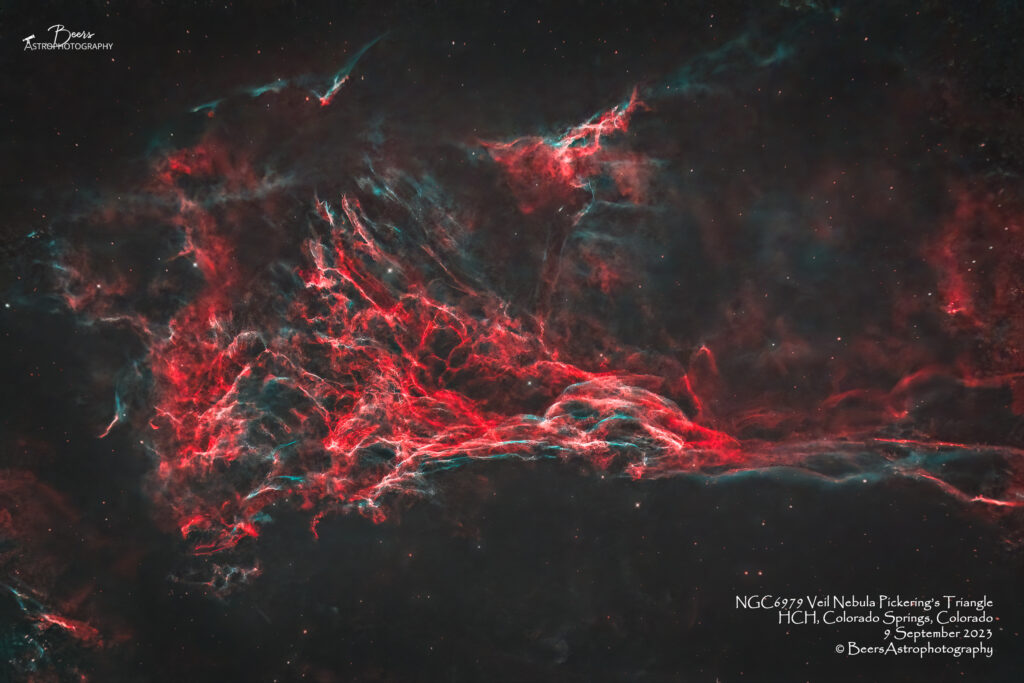I've captured the full Veil Nebula with the Southern Cross (600mm telescope) and have been working on capturing the major pieces of the whole with both Big Bertha and Big Zeus to get a closer look. This image of NGC6979 Pickering's Triangle rounds out that look.
NGC6979 Veil Nebula's Pickering's Triangular Wisp (a.k.a. Pickering's Triangle)

The Veil Nebula - Pieces and the Whole
The Veil Nebula is a cloud of heated and ionized gas and dust in the constellation Cygnus. It constitutes the visible portions of the Cygnus Loop, a supernova remnant. The source supernova was a star 20 times more massive than the Sun which exploded between 10,000 and 20,000 years ago. At the time of explosion, the supernova would have appeared brighter than Venus in the sky, and visible in daytime. The remnants have since expanded to cover an area of the sky roughly 3 degrees in diameter (about 6 times the diameter, and 36 times the area, of the full Moon). While previous distance estimates have ranged from 1200 to 5800 light-years, a recent determination of 2400 light-years is based on direct astrometric measurements.
The Hubble Space Telescope captured several images of the nebula. The analysis of the emissions from the nebula indicates the presence of oxygen, sulfur, and hydrogen. The Cygnus Loop is also a strong emitter of radio waves and x-rays.
In modern usage, the names Veil Nebula, Cirrus Nebula, and Filamentary Nebula generally refer to all the visible structure of the remnant, or even to the entire loop itself. ( https://beersastrophotography.com/gallery/cygnus-loop-veil-nebula-ngc6960-western-veil-witchs-broom-ngc6992-eastern-veil-pickerings-triangle/ )
The structure is so large that several NGC numbers were assigned to various arcs of the nebula.
- The Western Veil (also known as Caldwell 34), consisting of NGC 6960 (the “Witch’s Broom”, Lacework Nebula, “Filamentary Nebula”) near the foreground star 52 Cygni; https://beersastrophotography.com/gallery/ngc6960-west-veil-witchs-broom-nebula/
- The Eastern Veil (also known as Caldwell 33), whose brightest area is NGC 6992, trailing off farther south into NGC 6995 (together with NGC 6992 also known as “Network Nebula”) and IC 1340; https://beersastrophotography.com/gallery/ngc6992-eastern-veil-nebula/
- Pickering’s Triangle (or Pickering’s Triangular Wisp), brightest at the north central edge of the loop, but visible in photographs continuing toward the central area of the loop. https://beersastrophotography.com/gallery/ngc6979-veil-nebula-pickerings-triangle/
